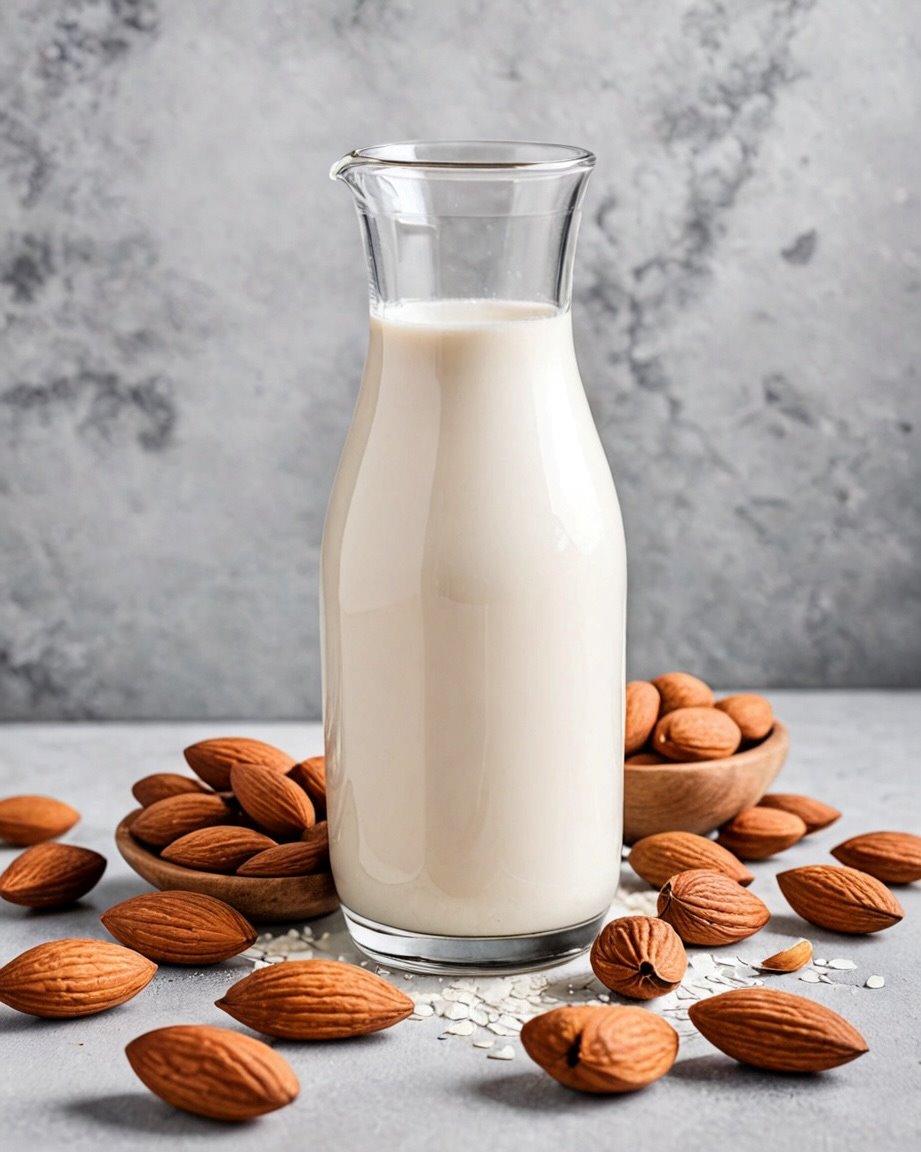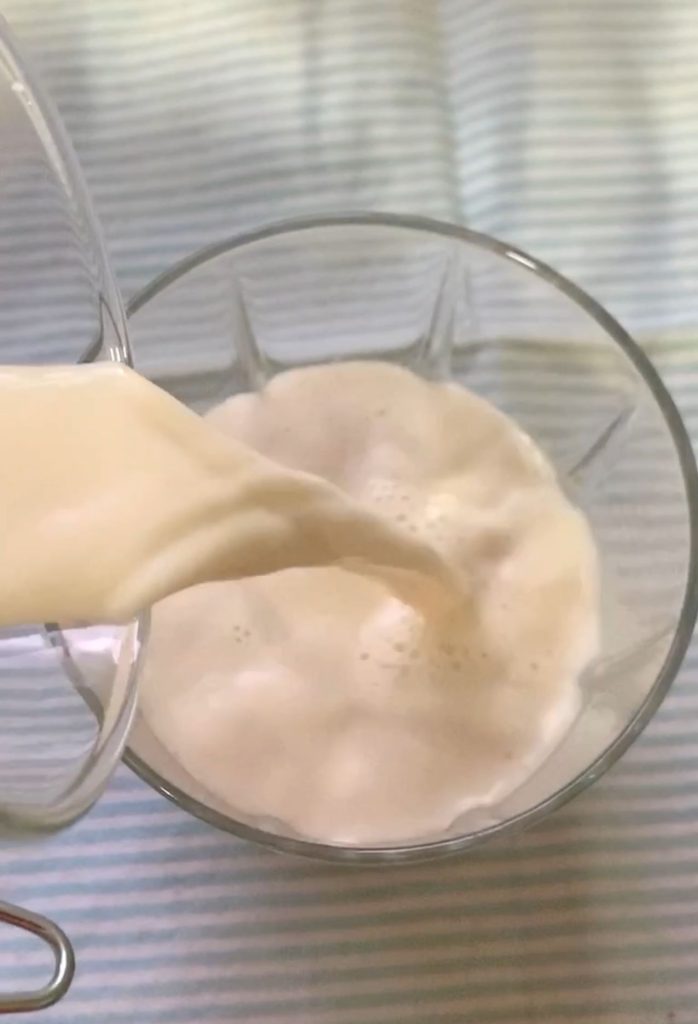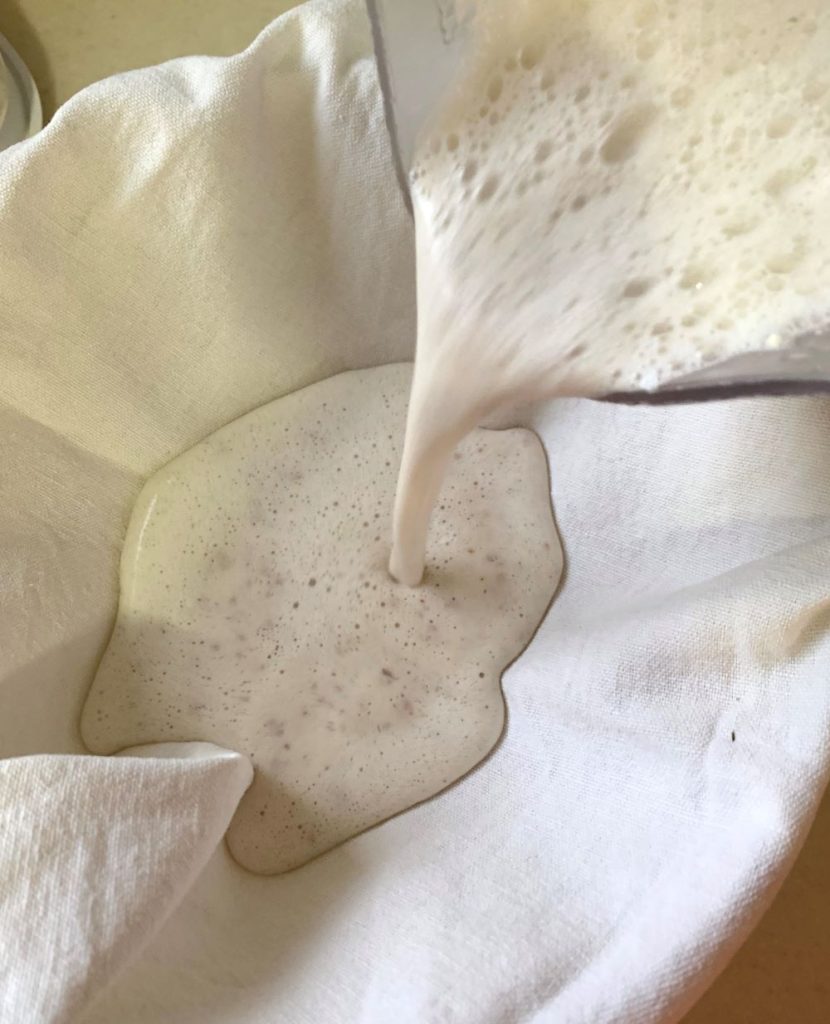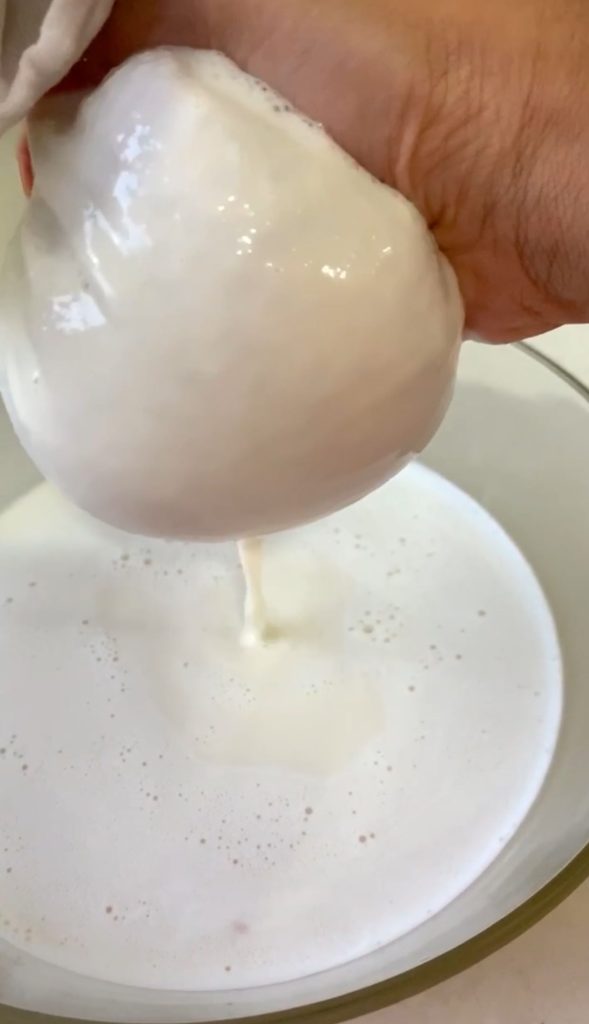
While I love the convenience of store-bought almond milk but once you get the taste of your homemade version, it’s hard to go back to store-bought milk. It’s creamier and nuttier than commercial almond milk and of course without thickeners, artificial flavors, stabilizers and no shelf life extending additives.
Almond milk is a nutritious, nut-based dairy alternative and has become popular over the years. It’s dairy and lactose free. Hence, making it a good option for those avoiding dairy or are lactose intolerant.
Including almond milk in an overall healthy and balanced diet certainly has its upsides. Almond is a fabulous source of vitamin E, a nutrient that has antioxidants properties. Since it is low in calories, it can also support your weight management goals. 1 cup of almond milk has only around 40 calories. It also contains heart-healthy poly- and monounsaturated fats and is also free from saturated fat, trans fats and dietary cholesterol.
While homemade almond milk is a great source of nutrients, it is not a good source of protein and calcium but don’t let it stop you. There are plenty of other plant base sources of calcium and protein which you can include in your diet.
Homemade almond milk allows you to control the amount of sweetness and infuse flavors as well as play around with the thickness. It’s amazingly simple- just soak, blend and strain and it is super versatile. You can use this milk for making coffee, add it to your cereals, blend it to smoothies, use it in your favorite baked goods. Once you have it in hands, there are million ways to use it.

How to make Almond Milk
Ingredients: makes 800 ml thick Almond milk
- 1 cup raw Almond
- 3 sticky Dates
- 1/2 tsp Vanilla extract
- 3 cups of filtered Water
Instructions
- Soak almonds overnight or for at least 7-8 hours. Now most recipes call for soaking almonds in hot water for an hour or 2. But soaking it for long increases bioavailability of the nutrients and makes milk easy to digest. Also, it makes almond easier to blend resulting in creamier milk.

- Drain the water. The almonds should be nice and plump. Add soaked almonds in a blender. (Do not peel the skin. Skin contains several antioxidants and prebiotics)
- Also add de-seeded sticky dates and vanilla extract.

- Add filtered water and then blend till it is smooth & creamy. Do it for 1 or 2 minutes. The timing will depend on how powerful your blender is.

- Take a clean muslin cloth and set it over a large bowl. Add almond milk. Use your hands to squeeze and press as much liquid out as possible. This is thick creamy milk.

- If you want it thin, which I like, put the almond residue back in blender. Add 1.5 cups of water and strain again. This will be thin and less creamy.
Variations:
- You can choose sweetener of your choice as well. If you don’t want to use sticky dates, you can either go for maple syrup or honey to sweeten it.
- You can also simply go for unsweetened version of almond milk as well.
- Flavoring your almond milk is totally your choice. Either you can add vanilla extract like mentioned above or flavor it with cinnamon or raw cacao powder if you like chocolaty milk.
- You also try blending it with strawberries or blueberries if berry milk is your thing.
Notes:
- You can use almond milk right away or refrigerate it in a clean airtight glass bottle for upto a week.
- Do not throw away the almond residue. This can be added to cakes, cookies, smoothies, energy bites. You can also spread the almond residue on a baking tray and bake it in an oven at 180 C till moisture evaporates. Once cooled, grind it to a fine powder and you have your homemade almond meal ready.










[…] also great in baking, adding a subtle nutty undertone to vegan muffins and pancakes. Homemade Almond Milk tastes absolutely delicious. It is much more nuttier and creamier than commercial milk and it will […]
[…] Plain yogurt: This adds moisture and protein. You can also use milk instead. If you want to make it vegan, you can add Almond Milk or Coconut Milk or any other nut milk. Check out the recipe of Homemade Almond Milk here. […]
[…] it makes the pudding extra-rich and creamy, but if you don’t have any on hand, don’t worry! Almond milk is also a great […]
[…] have buttermilk, you can use yogurt or milk. You can also make these vegan by using Almond milk or Coconut […]